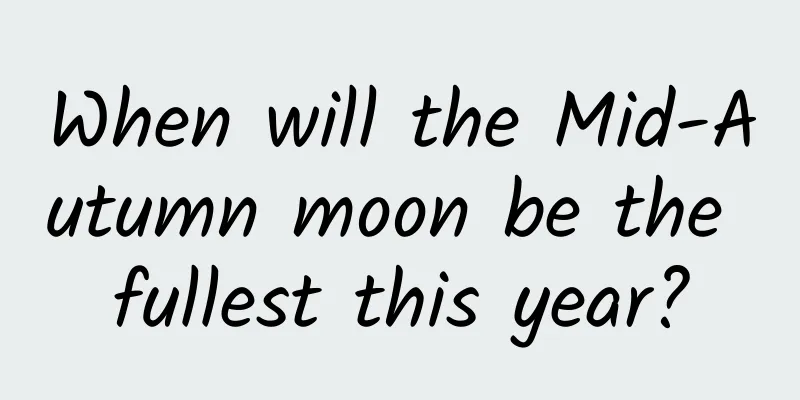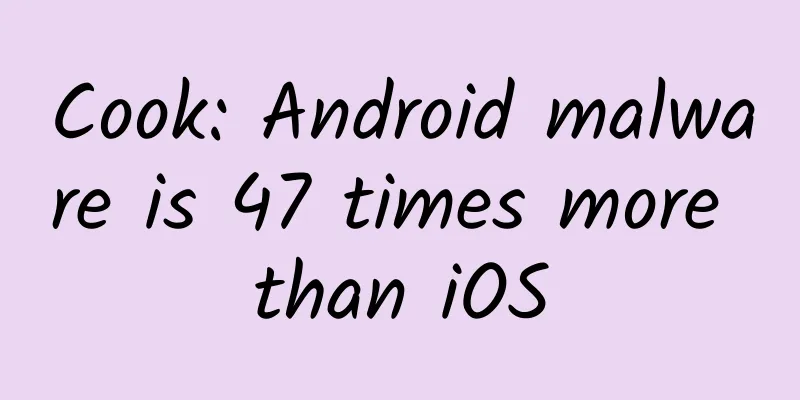When will the Mid-Autumn moon be the fullest this year?

|
Although there has been a saying since ancient times that "the moon is full on the 15th and the 16th", in fact the time of the full moon on Mid-Autumn Festival is different every year. Image source: Veer Gallery Part.1 Moon shape : When does the full moon appear? On the 15th day of the eighth month of the Guimao year, which is the Mid-Autumn Festival in 2023, the moon will be at its fullest at 17:57 on September 29th, Beijing time. This year, the moon is full on the 15th day of the 15th month , but the fullest moment is during the day. It is not realistic to see the full moon. We need to wait until the evening to see a full moon rising. Although the fullest moon on the night of Mid-Autumn Festival has been slightly missed, the naked eye of ordinary people cannot tell the difference compared with the fullest moment. That is to say, although we have slightly missed the fullest moment of the moon when we can see the bright moon, this change is actually difficult to distinguish with the naked eye. Therefore, the waxing and waning of the moon cannot be recognized by our naked eyes, and the moon-viewing trip is still worth looking forward to. Image source: Veer Gallery Part.2 month : When will it start to grow? When it comes to the full moon, it doesn't necessarily have to be on August 15th, it could be on the 16th or 17th. The reason why there is a saying among the people that "the moon on the 15th is fuller on the 16th" is because the moon revolves around the earth in an elliptical orbit, and it takes an average of 29 days, 12 hours and 44 minutes from one full moon to the next, which is almost a whole day. Image source: Veer Gallery During the "full moon" period, the moon, the earth and the sun are closest to a straight line, so the moon is the roundest and brightest. However, due to the speed of the moon (around the earth) varies, the time of the full moon is different each time, mostly in the early morning of the 16th, 15th, or even 17th day of the lunar calendar (in a few cases, on the 14th day of the lunar calendar). Why is the moon full on the 16th? There are two important reasons. The first reason is that a complete cycle of "new moon-full moon-new moon" is 29.53059 days, from new moon (new moon) to full moon (full moon) and then to new moon (new moon). Since the average cycle of "new moon-full moon-new moon" is 29.53 days, the average value of a "half cycle" (that is, "from new moon to full moon" or "from new moon to full moon") is 14.77 days. Please note that these are only "average" values. According to the lunar calendar, the day of the new moon is the first day of every month. This is just like the traditional Chinese age counting system, where a person is one year old from birth, instead of the age counting system, where a person is considered to be one year old after being born at the age of zero. In fact, this is the subtlety of "the moon is full on the 15th and the 16th." Understanding this is the first key to understanding this problem. On the same day, the new moon may occur in the early morning or in the evening, and each synodic month has different lengths, making this problem very complicated to analyze. To make it easier to explain this complex issue, let us use an analogy. For example, when we use the average half-period of 14.77 days as the basis for our investigation, even if the "new moon" occurs in the early morning (we record the day of this early morning as the first day of the new moon), then by the time of the "full moon" (1.00+14.77=15.77), no matter what, it will be a little after six o'clock in the evening of the fifteenth day. Please note that the 1.00 here represents the "zero point of the first day". If the "new moon" appears at noon on the first day (that is, halfway through the day, the middle of the day), then it will be represented by 1.50. If the new moon appears very late in the day, almost at 23:00, then this day must be the new moon day, and we must record it as 1.96... With such a quantitative relationship, the analysis is clearer. But some people may say that this is not right. Even if we use 1.00+14.77 or 2.00+14.77 as two extreme cases, the time of "望" will only be at 15.77 and 16.77, which corresponds to around 9 o'clock in the evening of the 15th and 16th respectively. We can understand whether the moon on the 15th is "full on the 15th" or "full on the 16th", but how did the "full on the 14th" and "full on the 17th" come about? Pay attention. Pay attention. Didn't I just say that 14.77 days is just an average? This brings us to the second key reason. The orbit of the moon around the earth and the orbit of the earth around the sun are both approximately elliptical. According to Kepler's theorem, the speed of the movement is sometimes fast and sometimes slow. The speed of the moon's "pace" in a certain period of time determines the interval from the new moon to the full moon, which is about 13.9 days at the shortest and about 15.61 days at the longest. This makes it possible for the full moon to occur on the 17th or 14th day of the lunar calendar. Based on the above knowledge, we get two reasons for this result: First, we usually record the day when the new moon appears as the first day of the new year (directly "give one point", without "starting from zero to full year"). In addition, the new moon does not necessarily appear in the early morning of the first day of the new year, it may also appear at noon or evening of the first day of the new year, which gives a "margin range". The second reason is that the orbit of the moon around the earth is elliptical, and the elliptical orbit itself is still precessing. According to Kepler's second law (also known as the area law, which means that the area swept is equal in equal time), when the moon is closer to the earth, the linear velocity and angular velocity are relatively large; when the moon is far away from the earth, the linear velocity and angular velocity are relatively small. This results in the alternation of new moon-full moon-new moon in a cycle not being uniform, but sometimes fast and sometimes slow. Therefore, the different speeds of movement cause the full moon not to be in the middle of a month. It may appear later, on the 16th day of the eighth lunar month, or even later, on the 17th day of the eighth lunar month. Of course, it may also appear earlier, on the 14th day of the eighth lunar month. How is it possible that the moon is full on the 14th day of the 8th lunar month? I answered with a firm "Maybe". When the moon's orbit around the earth spirals into a specific direction with the far axis of the ellipse pointing just right, and if the new moon happens to occur early at this time, the two "favorable" factors will combine and the moon will "hurry up on its way to an early market" after having a "new moon" that "gets up very early". So the combination of "early and fast" and "right time and right place" brought together the bright moon, which "borrowed the east wind", was able to reach the full moon at the fastest speed. Thus, the situation of the fourteenth full moon appeared. In the 100 years of the 21st century, statistics show that there have been 1,241 "full moons" on the 17th, 16th, 15th and 14th of the eighth lunar month. The most frequent was the 16th of the eighth lunar month, with 579 times, followed by the 15th of the eighth lunar month, with 468 times, and the 17th of the eighth lunar month, with 188 times. The least frequent was the 14th of the eighth lunar month, with only 6 times. The most recent appearance of “the moon is full on the 14th day of the 15th month” was on the 15th day of the sixth lunar month in the Year of the Rat in 2020. It is not far away from us, we have all experienced it, it’s just passed. Image source: Veer Gallery Part.3 Moonlight : Why is it so colorful? We have appreciated the shape of the moon and learned about the changes in the time of the moon's appearance. So what is the mystery behind the color of the moon? Why does the moon sometimes look golden and sometimes silver? What other colors does the moon have? Don't worry, let's continue to appreciate the moon slowly. The moon is colorful and mottled, and I believe that what everyone is most interested in is the red moon. The color of the moon is strongly related to atmospheric dispersion . When it is on the horizon, it sometimes appears red, which is similar to the principle that the sun is red on the horizon. This is because when it passes through the thick atmosphere to reach the human eye, only red can penetrate the atmosphere , and other colors of light are dispersed and separated. Image source: Veer Gallery This phenomenon is particularly obvious during a lunar eclipse . When the moon completely enters the earth's umbra, theoretically all sunlight is blocked by the earth, but due to the existence of the earth's atmosphere, it perfectly acts as a dispersion prism plus filter. After the purple, blue, yellow, and green light are blocked by the atmosphere, only the red light with stronger penetrating power is refracted to the moon. If we humans could stand on the moon and look up at the earth at this time, we would see that the earth's atmosphere is surrounded by a magnificent orange-red halo. If we humans are lucky enough to see this scene, it will definitely shock everyone. "When I was young, I didn't know the moon, I called it a white jade plate. I also thought it was a mirror on the Jade Terrace, flying in the blue sky." It can be seen that in the poems of the ancients, they did not often see the red moon, but instead saw the white jade moon. So how is the silvery white moon formed? Image source: Veer Gallery We know that when the seven colors of light from the sun, "red, orange, yellow, green, cyan, blue and purple" are combined together, they become white light . The moon itself does not emit light, and the light it emits is reflected sunlight. Obviously, in the same way, when the moon reflects the light reflected on itself and passes through the atmosphere, if none of the seven colors of light is absorbed, the light reflected into the human eye will be silvery white. In addition to silver moonlight, yellow moon is also a color we often see. How is it formed? When moonlight passes through the atmosphere, impurities such as water vapor and dust absorb the shorter wavelengths of cyan, blue and purple light. The remaining colors of light mix together and enter our eyes to form the yellow moon we see. Image source: Veer Gallery The thicker the water vapor in the atmosphere, the more orange-red the moon will be. When the moon passes through the atmosphere obliquely and appears near the horizon, the light will travel a longer distance and encounter more obstructing dust particles than when it passes through vertically, so more cold light will be absorbed or scattered. Therefore, when the moon is at the horizon, it will appear more orange-yellow, which is very beautiful and charming. Some of you may ask, blue moons are rare to see, so how is this seemingly tranquil color formed on the moon? Yes, blue moons are rare, but they do exist. Because the conditions for the formation of a blue moon are very harsh, it is not easy for us to observe it. In historical documents, a blue moon represents the occurrence of a natural disaster. Image source: Veer Gallery Most of the records of blue moons are accompanied by disasters such as volcanic eruptions, earthquakes, forest fires, etc. When these disasters occur, a large amount of smoke particles will be formed in the air. These fine particles can absorb and filter out the longer-wavelength light such as red, orange, and yellow, and only allow blue and purple light to pass through, so the light that reaches our vision forms a blue moon. Part.4 Celebrating Mid-Autumn Festival with My Son The golden wind is refreshing, the jade dew is cool, and the osmanthus is fragrant. The full moon of Mid-Autumn Festival not only represents longing and reunion, but also contains many secrets of natural science. Finally, I wish you all can get together with the people you want to see during the Mid-Autumn Festival. Even if we cannot be reunited, we can still enjoy the bright moon together thousands of miles apart. Produced by: Science Popularization China Author: Dong Zhichuan (Nanjing Institute of Astronomical Optics and Technology, Chinese Academy of Sciences) Producer: China Science Expo This article only represents the author's views, not the position of China Science Expo. This article was first published on China Science Expo (kepubolan). Please indicate the source of the public account when reprinting. |
<<: AI beats human champion again! There may be new breakthroughs in the field of driverless cars →
>>: Mid-Autumn Festival, the lunar exploration plan is here! Chang'e 6 will be launched around 2024
Recommend
Huawei Developer Competition offline sharing session @ Huawei Connect Conference
On August 31, 2016, HUAWEI CONNECT 2016 was grand...
91 Ten Articles: NIO’s first overseas stop is Norway, Wuling Hongguang is exported to Lithuania at a high price of 20,000 euros
1. Li Bin, founder, chairman and CEO of NIO, once...
A piece of five-nut mooncake makes Europeans and Americans "annihilate". Are Chinese people not prone to allergies?
“Chinese people are not prone to allergies?” Some...
Touch Technology helps the completion of the "Xiamen Game Innovation Center Project"
On May 15, 2015, the Jimei District Government of...
No need for Root, you can also use the powerful Xposed framework: VirtualXposed
If you like to tinker with Android devices, you s...
What are the specific contents of rural construction? Attached is the latest implementation plan for rural construction action
Recently, the General Office of the State Council...
In unison, why are BAT collectively imitating LeEco's ecosystem?
In 2014, "ecosystem" became a fashionab...
Amazing! This bird's beak changes color during the breeding season
The arrival of spring is always accompanied by th...
Why have domestic mobile phones made a comeback?
Global mobile phone market landscape Data from th...
How to promote marketing on Weibo? Take the industry's high-quality cases~
This article starts from social media marketing ,...
Nokia's heart breaks: 105 phones become ISIS's favorite bomb detonator
According to the online version of Fortune magazi...
Brother Qihang: Douyin brings goods: One person makes 300 videos a day and easily earns more than 100,000 yuan a month with advanced violent gameplay
So if you want to succeed, you must keep learning...
A must-have file search tool for your computer, better than Everything
Overview In daily work and life, a common operati...
How to completely clear the residual folders after uninstalling mobile APP?
After the files and apps downloaded on the phone ...
Loongson: A pure Chinese chip with a new lease of life
Speaking of chips, they have always been the focu...









